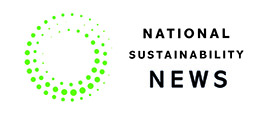The IEA’s new World Energy Outlook outlines how energy is becoming a major source of geopolitical tensions and the need for governments to pursue greater diversification of supplies.
Among the many trends common to all the scenarios in the report is the growing need for energy services, with demand rising for mobility; for heating, cooling, lighting and other household and industrial uses; and increasingly for data and AI-related services.
In particular, a group of emerging economies, led by India and Southeast Asia and joined by countries in the Middle East, Africa and Latin America, will take up the baton from China, which accounted for 60 per cent of electricity demand growth since 2010.
Amid these shifts, traditional energy risks are now accompanied by vulnerabilities in other areas, most visibly in supply chains for critical minerals, however, renewables grow faster than any other major energy source in all of the IEA’s scenarios, led by solar PV. Nuclear energy also sees a revival of fortunes across all scenarios after more than two decades of stagnation.
A pivotal issue for energy security is the speed at which new grids, storage and other sources of power system flexibility are put in place. For the moment, some of these elements are lagging. Investments in electricity generation have charged ahead by almost 70 per cent since 2015, but annual grid spending has risen at less than half that pace.
While the report shows the world surpassing 1.5C of warming in any scenario in the nearer term (for example,, final investment decisions for new LNG projects have surged in 2025) it still sees scope for avoiding the worst climate outcomes. The updated net-zero scenario brings temperatures back below 1.5C in the long term.
“When we look at the history of the energy world in recent decades, there is no other time when energy security tensions have applied to so many fuels and technologies at once, a situation that calls for the same spirit and focus that governments showed when they created the IEA after the 1973 oil shock,” said IEA executive director Fatih Birol.
© 2019 Perspective Publishing Privacy & Cookies



Recent Stories